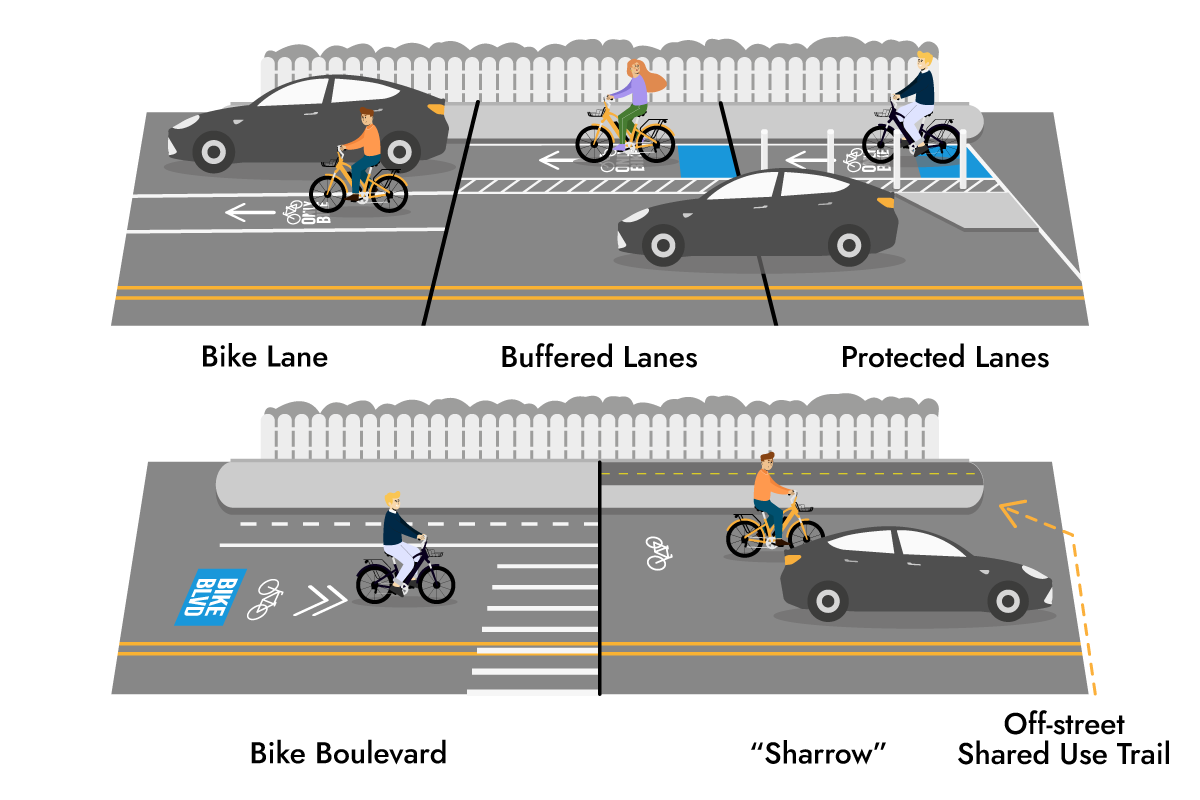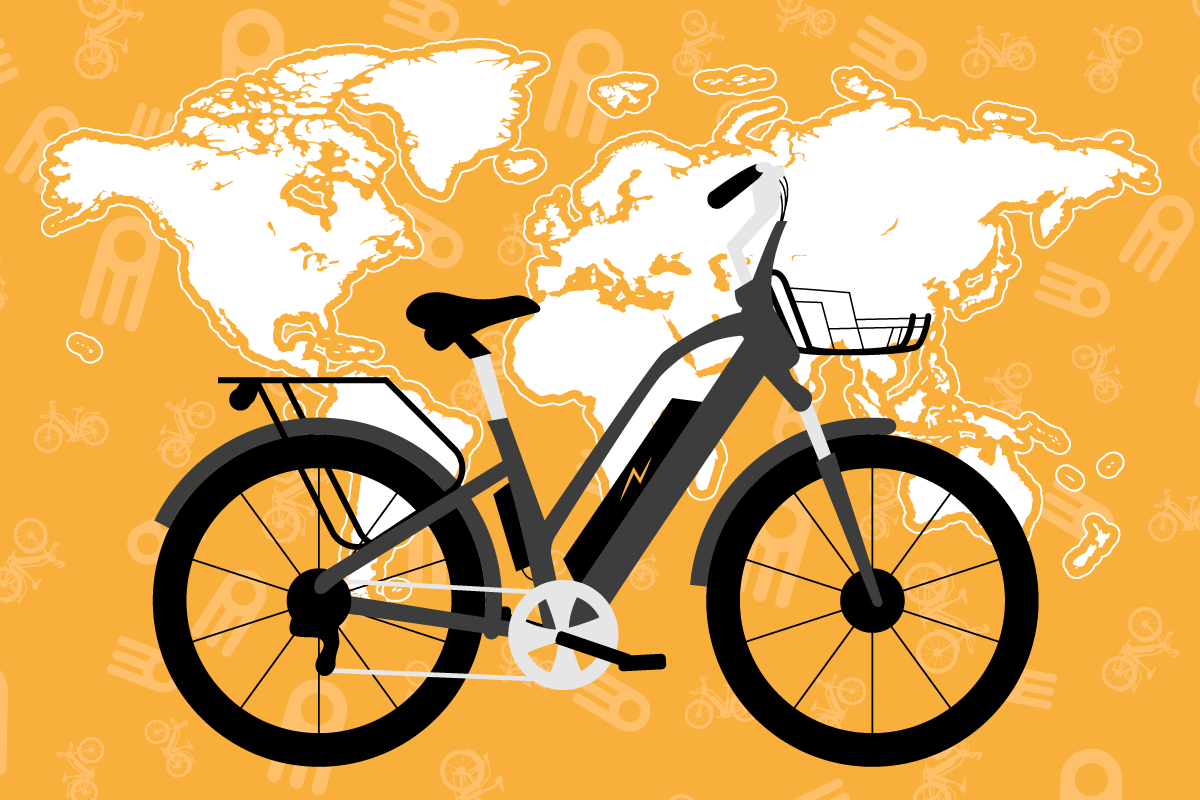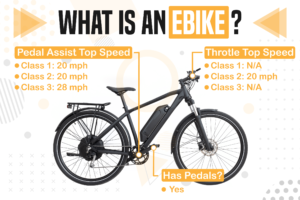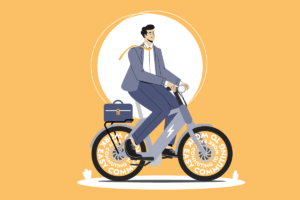The cycling boom during the pandemic was no fluke— year after year, ebike sales continue to grow across Europe and North America. After the ebike market resolved the product shortages caused by pandemic-affected supply chains and skyrocketing popularity, the high demand for electric bikes persisted through 2022 and shows no signs of slowing down. With estimates that the ebike market will grow more than 10% annually until the end of the decade, let’s take a dive into the reasons behind the increased sales of ebikes across western countries.
Recent growth
Changing tastes along with significant investments in cycling infrastructure and ebike technology have fueled the biking renaissance that’s lasted since the outbreak of the pandemic. A 2022 study conducted by Deloitte surveyed 1,008 German respondents about the type of electric transportation they used, if any. Ebikes (18%) were by far the largest category of electric vehicles used for commuting, impressively outdoing electric cars (7%), electric scooters (7%), electric mopeds (3%), and electric motorcycles (2%). Each year, more riders across Europe and North America are realizing why electric bikes are perfect for commuting. Choosing an ebike can even save you time on your daily ride to work!
Future predictions
Total ebike sales in North America and Europe nearly doubled between 2018 and 2021, leaping past six million units sold in 2021 alone. The demand for electric two-wheelers in the US is significantly smaller than in Europe, but it’s growing fast stateside. Ebike sales in the US are far outpacing sales of electric cars and are approaching the 1 million mark for annual ebikes sold. In 2021, around 880,000 ebikes were purchased in the US whereas only 608,00 electric cars and trucks were sold. The same situation is expected to occur in Europe as electric bike sales increase annually by between 30-40% and car registrations are slowing down due to sky-high gasoline prices and the development of transportation alternatives. In terms of straight-up numbers, ebikes are projected to outsell cars in Europe within the decade. Ebikes are increasingly becoming a practical alternative to cars because of their fast speeds (limited to your local regulations) and long-distance range that can reach upwards of 60 miles on a single charge.
Bike-friendly cities
The COVID-19 pandemic changed the way the world works while reviving the fight for more and better cycling infrastructure within our urban areas. As cities sought to encourage safer, socially-distanced forms of transportation, many local governments took the opportunity to test out investing in more bike paths, increased bike parking, and protected lanes to get more people on two wheels. Local riders can check to see if these improvements and investments in sustainability are happening in their area. Many of these development plans had been championed by local organizers for years and have been in the works, but were finally implemented amid cycling’s booming popularity and soaring gas prices.
City planners are continuing this trend and successful projects as examples such as the 62-mile bicycle highway that connects 10 German cities. Berlin is planning a similar city-wide bike highway and American cities are boosting their amount of bike lanes, too. Five US cities— Austin, Denver, New Orleans, Pittsburgh, and Providence— recently built a combined 335 miles of bike lanes in under a year with support from the Final Mile project that pushes for more effectiveness in urban transportation as a whole.
In addition to longer bike routes, cities are improving the quality of bike infrastructure by making it safer and better connected to other forms of urban transport. Many cities have committed to reaching Vision Zero’s goal of eliminating all traffic deaths and serious injuries. Protected bike lanes— ones with extra space and physical barriers that separate cyclists from cars— are on the rise and make a huge difference in reducing traffic incidents and boosting rider safety. Even popular ride-sharing companies like Lyft have their own ebike fleets and city-wide programs like Citi Bike in New York City are now competing with newcomer brands all fighting for a piece of the action.

More competition and better ebikes
Another reason for the exciting year-on-year growth of ebike sales is the high competition between brands and improved features on ebikes. There are more than 400 brands selling electric bikes in the US alone meaning brands are trying hard to stand out and have developed lighter frames, innovative accessories, specialized models, and more cost-effective components. Users can now expect great features such as hydraulic brakes and longer-lasting batteries—previously reserved for high-end ebikes— included on budget-friendly and entry-level models.
As sales grow, electric bikes are significantly lighter than previous generations and can weigh less than half as much as they did several years ago. We conducted an extensive survey that compared the weight of over 850 ebikes available on the ebike market today. Since the ebike boom, brands are also producing commuter-specific models complete with fenders, racks, and other city-proof features that make ebikes great for commuting. Today, there are more reasons than ever why you should buy an electric bike.
The past few years can seen important advances in manufacturing have made ebikes more cost-efficient across the board. Ebikes are now accessible to a wider group of cyclists across a range of budgets. Electric-powered bikes can cost between $1,000 all the way up to $14,000+, so there’s a perfect machine out there for everyone. With so many options available, there are affordable ebikes that encourage riders to try out cycling as well as convince experienced bikers to return to the sport. Toward the higher end of the price spectrum, there are professional models with added tech and top spec components.. In 2022, ebikes are available at a range of prices to match any budget.
Final thoughts
As we approach the end of 2022, the ebike future is looking as bright as ever. Demand for ebikes in Europe continues to grow and shows promising signs throughout the rest of the decade, with the US following in its footsteps. Most research and surveys predict an increasingly strong ebike market that’s sure to transform our urban environments for the better, replacing cars and encouraging an active lifestyle. Individual consumers, manufacturers, and governments are all key players in the growth of the ebike industry and, as change comes to our own backyards, it’s important to remind our local officials of the crucial role of bicycles. As cities become more bike-friendly and invest in sustainability, electric bikes are here to stay.



